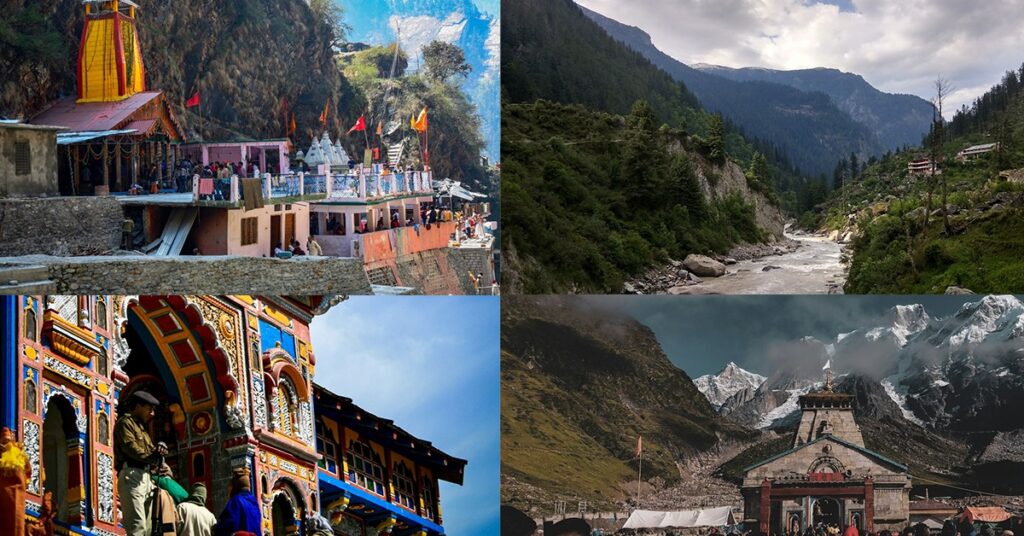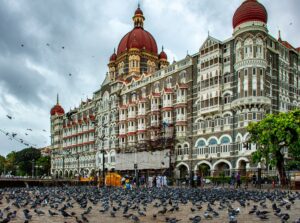
How Local Guides Enhanced My Char Dham Yatra Experience
Embarking on the Char Dham Yatra was one of the most sacred and transformative journeys I’ve ever taken. From the very beginning, I knew this pilgrimage wasn’t just a vacation—it was a spiritual calling, a soul-stirring adventure through the Himalayas to visit the four holy shrines of Yamunotri, Gangotri, Kedarnath, and Badrinath. But while I had prepared physically and mentally, what I didn’t fully grasp was how crucial a local guide would be to my experience. Without their guidance, knowledge, and unwavering support, my yatra would have been incomplete.
At first, I debated whether I truly needed a guide. I had an agenda, a smartphone, and an adventurous spirit, after all. But believe me, the Himalayas are serious business. The terrain, the altitude, the sheer unpredictability of the journey—these things humbled me fast. And that’s when my local guide stepped in, not just as a navigator, but as a teacher, storyteller, caregiver, and friend. If you’re thinking about doing the Char Dham Yatra, let me tell you how having a local guide made all the difference.
My Understanding of the Char Dham Yatra
Why It Mattered Spiritually
From a very young age, I’d heard tales of the Char Dham from my grandparents and priests at the temple. In Hinduism, this pilgrimage is believed to help one attain Moksha, or spiritual liberation. The four sacred temples—Yamunotri, Gangotri, Kedarnath, and Badrinath—are said to cleanse the soul of sins and connect the pilgrim with divine energies. I wasn’t just going there to take photos or tick places off a list—I was going to experience something sacred, something that transcends the physical.
But while the spiritual importance was clear in theory, I didn’t truly feel it until I stood before the temples, breathed in the crisp mountain air, and heard the mantras echoing across the valleys. And honestly, I would’ve missed half of those sacred moments if my guide hadn’t been by my side. He told me the legends associated with each site, explained the significance of each ritual, and helped me connect with the divine on a much deeper level. What I once understood only intellectually, I now felt in my heart.
What I Knew About the Four Sites
Before starting the journey, I had a basic idea about each of the Char Dham locations. Yamunotri, dedicated to the Goddess Yamuna, is the source of the Yamuna River. Gangotri, similarly, is where the Ganges originates and is dedicated to Goddess Ganga. Badrinath, the home of Lord Vishnu, is located calmly next to the Alaknanda River, whereas Kedarnath is a strong Shiva temple tucked away high in the Garhwal Himalayas.
But knowing that and actually being there are worlds apart. My guide gave me context that went beyond the guidebooks. For instance, at Yamunotri, he pointed out the Surya Kund where people boil rice in the hot springs as a sacred offering. At Gangotri, he showed me the rock where Bhagirath meditated for centuries. At Kedarnath, he shared how the temple withstood the devastating 2013 floods. And at Badrinath, he told me about Adi Shankaracharya’s role in reviving the temple. With each story, the sites became alive—not just as places, but as legends etched into the Earth.
The Real Struggles Along the Way
Tough Terrain, Tougher Weather
Nothing—and I mean nothing—can fully prepare you for the Himalayan terrain. The altitude, the long treks, and the bone-chilling cold all test your endurance. On the path to Kedarnath, I remember my legs shaking, my breath becoming shallow, and my thoughts screaming, “Why did I think I could do this?” The climb was steeper than expected, and the cold wind cut through every layer of clothing I had. And yet, my guide moved steadily, always a few steps ahead, keeping an eye on me, urging me forward with quiet encouragement.
The weather was another wild card. One moment, the sky was clear; the next, clouds rolled in, and rain began to pour. At Gangotri, a sudden hailstorm forced us to take shelter under a ledge. Thanks to my guide’s experience, we avoided a risky trail that had become dangerously slippery. He knew the rhythm of the mountains, could read the skies, and always had a backup plan. Without him, I could have easily gotten lost—or worse.
Lost in Translation (Almost!)
Though I speak fluent Hindi, I quickly realized that the local dialects and cultural nuances were a different world altogether. In smaller villages and remote stops along the yatra, many locals spoke Garhwali or regional variations of Hindi that were hard for me to fully understand. My guide stepped in not only as a translator but as a cultural liaison. He communicated with drivers, arranged accommodations, and even helped negotiate prices for food and supplies.
He also explained customs that would have gone right over my head. For example, in certain temples, there were specific rules about where to stand, how to dress, and what not to touch. Without his guidance, I might have unintentionally offended someone or broken a tradition. His presence helped me move through the journey respectfully and with confidence, allowing me to truly immerse myself in the local culture.
The Local Guide Who Made It All Work
Stories That Brought Every Temple Alive
Every step of the journey became richer thanks to the stories my guide told. He described how the temple at Yamunotri was constructed in honour of the goddess who is thought to bestow longevity. At Gangotri, he shared the legend of Ganga’s descent to Earth, telling it so vividly I could almost see the celestial river flowing down from the heavens. These stories weren’t just myths—they were lenses that helped me see the deeper layers of every temple, trail, and river. Planning your Char Dham Yatra? Choose The Searching Souls for expert guidance, unmatched local knowledge, and a truly spiritual experience!
By the time we reached Kedarnath, I felt like I had walked through centuries of history and spirituality. He described how Lord Shiva turned into a bull to avoid the Pandavas and how the temple’s lingam represents his hump. At Badrinath, I learned about the twin hot and cold springs and why sages still meditate in the nearby caves. It was like having a spiritual encyclopedia walking beside me—only better, because it came with heart.
Cultural Tips I Would’ve Missed
There’s a delicate balance between being a respectful traveler and unintentionally offending the local culture. Without my guide, I would’ve been clumsy in that department. He taught me small but important things—like how to greet sadhus, when to remove my shoes, and how to properly offer donations at the temples. He also helped me understand rituals I would have just observed from the sidelines otherwise.
During aarti ceremonies, he positioned me where I could see and hear everything without blocking anyone else’s view. He even whispered translations of Sanskrit chants so I could feel involved. It was through his guidance that I felt like more than a tourist—I felt like a pilgrim who belonged.
The Local Guide Who Made It All Work (continued)
He Had My Back—Literally
One of the most humbling moments on my journey happened during the trek to Kedarnath. I’d underestimated how physically grueling it would be. Despite training and good gear, I hit a wall halfway through. My legs felt like lead, my head was pounding from the altitude, and all I wanted was to lie down. My guide noticed immediately. Without a second thought, he took my backpack, handed me a glucose biscuit, and slowed his pace to match mine.
But that wasn’t all—he knew a shortcut to a quieter resting spot, arranged for a warm cup of tea at a roadside stall, and kept my spirits up with stories about other yatris who had struggled but completed the journey. That kind of personalized care isn’t something you get from a map or a tour package—it comes from someone who genuinely cares about your well-being.
He Kept Me Safe, Every Step of the Way
First Aid on the Fly
There was a night in Gangotri when the temperature dropped suddenly, and I woke up with a splitting headache—a symptom of mild altitude sickness. My guide was quick to act. He checked my oxygen levels using a small pulse oximeter he carried, wrapped me in extra blankets, and brewed a warm herbal concoction made from local roots. Within hours, I was feeling better.
He also taught me to recognize early signs of altitude sickness, like dizziness or loss of appetite, and how to prevent it by staying hydrated and not rushing the climb. His first-aid training and calm presence during that episode gave me incredible peace of mind. In remote areas where hospitals are hours away, a knowledgeable guide is your best—and sometimes only—line of defense.
He Knew the Mountains Like His Backyard
From choosing safe routes to knowing which sections to avoid after a fresh snowfall, my guide’s understanding of the mountains was extraordinary. At one point, heavy rains made the main trail slippery and dangerous. While others hesitated, my guide led me along a lesser-known but safer side route he had taken countless times before. We made it to our next destination without incident.
He also knew how to time our departures so we avoided heavy crowds at the temples and planned our rest stops near the best scenic views. It wasn’t just about getting from Point A to Point B—it was about making every part of the journey beautiful and stress-free.
Logistics? Handled Without Me Lifting a Finger
Food, Shelter, and Hot Tea
One of the most underrated parts of traveling with a local guide is not having to worry about food and accommodation. My guide had connections in every major stop. Whether it was finding a clean dharamshala with hot water in Yamunotri or securing a room near the temple steps in Badrinath, he had it sorted. I never had to haggle or worry about whether the rooms were safe or hygienic.
Even meals were a delight. He knew where to get the freshest, most soul-satisfying food—simple, sattvic meals made with love by local families. And the tea! Every time I felt tired or cold, he somehow found a place with the best masala chai. These little comforts added up and made the pilgrimage so much smoother.
Permits and Queues? Not My Problem
Another huge relief was how he handled all the official stuff. Getting the right permits, managing the yatra registration, and knowing temple timings can be overwhelming—especially when you’re dealing with fluctuating schedules, language differences, and government rules. My guide took care of everything. I just showed up and walked in.
At Badrinath, for instance, he timed our arrival to avoid the massive crowds and even had a word with a temple official to let us in through a side entrance. At Kedarnath, he made sure I had all the necessary documents and ID before our trek began. The amount of time and energy he saved me is immeasurable—and honestly, it allowed me to stay focused on the spiritual aspect of the journey instead of getting bogged down in red tape.
The Deeper Spiritual Experience I Gained
Stories That Moved My Soul
One of the most unforgettable aspects of traveling with a local guide was how he turned every place into a spiritual experience through storytelling. These weren’t just historical facts or dates—these were living legends that connected me to the divine energy of the Himalayas. While sitting by the banks of the Bhagirathi River in Gangotri, he told me the story of King Bhagirath’s penance, how he meditated for centuries to bring Ganga to earth. I’d read this before, sure—but hearing it while watching the river flow, feeling its spray on my face, was something else entirely.
He narrated how Kedarnath’s lingam is shaped like a bull’s hump because Lord Shiva transformed himself to escape the Pandavas. Or how the Saraswati River meets the Alaknanda behind Badrinath temple but remains invisible to the human eye—a symbol of purity beyond perception. These stories brought tears to my eyes. Suddenly, I wasn’t just a tourist—I was a part of this divine narrative that had been unfolding for centuries.
Taking Part in Rituals with Confidence
Before this trip, I used to stand at the back during temple rituals, unsure of what to do, where to sit, or even what the chants meant. But my guide changed all that. He walked me through every ritual before we entered a temple. From how to take a proper holy dip to where to place my offerings, he explained each step so I didn’t feel like an outsider. At Badrinath, he even taught me how to chant a few mantras with proper pronunciation. It wasn’t about performance—it was about connecting with intention.
One of the most touching moments was during the Ganga aarti at Gangotri. My guide found me a spot near the river where I could sit comfortably and absorb the entire ceremony. He translated the priest’s words, explained the symbolism of each gesture, and encouraged me to participate when the lamp was passed around. That night, as I offered my prayers with hundreds of other devotees, I felt completely present—heart, mind, and soul. That level of engagement was only possible because someone had taken the time to guide me, not just physically, but spiritually.
How He Taught Me to Respect the Land
Going Green Without Even Realizing It
My guide had an unshakable reverence for nature, and it rubbed off on me. He never made a big deal about it, but he always led by example. He carried a cloth bag to collect his own trash, refused to use plastic bottles, and encouraged me to refill my flask from designated water stations. At first, I thought he was just being environmentally conscious—but then I realized it was much deeper than that. To him, the mountains weren’t just landscapes—they were living, breathing entities worthy of respect.
He explained how the Char Dham region is ecologically sensitive, and how irresponsible tourism has caused landslides and pollution. Watching him act with such mindfulness inspired me to do the same. I stopped buying packaged snacks, started using reusable containers, and even joined him in picking up litter along the way. It wasn’t just about cleanliness—it felt like I was doing seva (selfless service) for the sacred land that was hosting my journey.
Respecting People and Traditions
There’s a kind of unwritten etiquette when you’re visiting sacred spaces, and my guide made sure I was always aware of it. From how to greet elders and sadhus to when to stay silent during rituals, he helped me navigate the social customs that aren’t always written in travel books. His advice wasn’t preachy—it was practical. He told me things like not to point my feet toward the temple sanctum, to always take blessings with both hands, and to wear modest clothing even when temperatures dropped.
What surprised me the most was how warmly the locals responded when they saw I was making an effort. A woman in a small village near Yamunotri offered me a cup of buttermilk simply because she appreciated my respectful demeanor. Another time, an old priest blessed me with a mantra after I greeted him the traditional way. These moments made me realize that cultural respect isn’t just about avoiding offense—it’s a bridge to real human connection.
Supporting Someone Who Supports Many
How My Money Made a Difference
Hiring a local guide didn’t just make my journey easier—it made a tangible difference in someone’s life. Over evening conversations by the fire, I learned that my guide used his earnings to fund his children’s education. He told me that being a guide wasn’t just a job—it was his way of preserving his culture, supporting his family, and giving back to his village. That really moved me.
Every time we stopped at a local dhaba, stayed in a family-run homestay, or bought fruits from a roadside vendor, I realized I was contributing directly to the local economy. I wasn’t funding a corporate chain—I was helping a grandmother feed her grandchildren, or a young man invest in better trekking shoes for his work. It gave my spiritual journey a deeper layer of meaning—knowing that my presence was beneficial, not burdensome, to the people of this sacred land.
Part of Something Bigger
What truly amazed me was how some guides, like mine, were part of larger community efforts. My guide was involved in a local initiative that taught young boys basic English and first aid, so they could one day become certified guides too. He also told me how guides in his village had pooled their resources to build a rain shelter along a remote trail. I felt honored to be part of this ripple effect, even if indirectly.
It made me realize that responsible travel isn’t just about taking—it’s also about giving back. Supporting a guide meant supporting a community, a culture, and a way of life that’s rooted in spirituality, simplicity, and service. And that, to me, is what makes the Char Dham Yatra not just a pilgrimage, but a shared journey of transformation.
Solo vs Guided Yatra – My Take
I Couldn’t Have Done It Alone
Before I left for the Char Dham Yatra, I considered going solo. I thought I could handle the challenges on my own, relying on maps, online forums, and apps. But once I was there, surrounded by rugged trails, unpredictable weather, and language barriers, I realized how unprepared I truly was. I met a few solo travelers along the way, and many of them looked physically exhausted and mentally overwhelmed. Some had missed their darshan slots due to transportation delays; others had booked accommodations that turned out to be unsafe or unhygienic.
On the other hand, I was able to walk at my own pace, eat nourishing meals, and sleep in comfort—all thanks to my guide. He navigated unexpected route closures, secured alternate transport when a landslide blocked the road, and even helped a fellow pilgrim find her lost ID. Having someone by your side who knows the land and the culture isn’t just helpful—it’s essential. Especially in high-altitude zones where one wrong turn can lead to disaster.
It Was Worth Every Penny
I get it—hiring a guide might feel like an added expense, especially if you’re traveling on a budget. But let me tell you, the value you get in return is priceless. You’re not just paying for someone to walk with you—you’re investing in peace of mind, safety, local insight, and a deeply enriched spiritual journey. My guide’s fee included accommodations he negotiated, meals at his trusted places, and tips on how to avoid overpriced vendors and scams. That alone saved me more money than I expected.
Moreover, he helped me optimize my time. Instead of waiting in line for hours or getting stuck in traffic because of a temple festival I didn’t know about, I breezed through, all thanks to his planning. My experience was smooth, fulfilling, and far more immersive than it would’ve been if I had tried to do it alone. Honestly, if I ever go again—or recommend this yatra to friends—I’ll always say: take a guide. It’s not a luxury; it’s a necessity.
Real Stories That Stay With Me
The Kindness I Experienced
There’s something about a shared pilgrimage that bonds people like nothing else. My guide wasn’t just an employee—I came to see him as a companion and a friend. One evening, during our stay near Kedarnath, I felt too cold to sleep. Without a word, he took off his own wool shawl and wrapped it around me. “Yeh aapke liye zyada zaroori hai,” he said with a smile. That simple act of kindness touched me more than words can express.
Another time, we found a little girl crying near Gangotri temple, separated from her family in the crowd. My guide immediately took charge, calmed her down, and managed to reunite her with her parents using his contacts with the temple security. I realized then that guiding wasn’t just a profession—it was a service, a calling even, rooted in dharma. These weren’t isolated incidents; this compassion defined my entire journey.
Pilgrims Who Became Family
Along the way, I met other pilgrims who were also traveling with local guides. One elderly couple from Tamil Nadu had their guide help carry their luggage and explain every ritual in Tamil. Another solo traveler from Mumbai told me how her guide helped her find a priest for a special prayer for her late father. Everyone I spoke to had similar stories—about how their guides went above and beyond, often becoming like family.
At the end of the trip, my guide and I exchanged numbers. We continue to occasionally check in. He sends me updates about the weather or temple news, and I’ve recommended him to a few friends who are now planning their own Char Dham Yatra. These connections, formed through shared challenges and spiritual discoveries, are what make the pilgrimage more than just a physical journey. They make it unforgettable.
Conclusion: The True Value of Local Guides in Char Dham Yatra
When I first set out on my Char Dham Yatra, I thought I was going on a solo quest to connect with the divine. What I didn’t realize was that I’d find that divine connection not only in the towering temples or chanting priests, but also in the kindness, wisdom, and presence of a humble local guide who walked beside me every step of the way. He turned a difficult trek into a manageable path, confusion into clarity, and spiritual rituals into deeply personal experiences.
Having a guide wasn’t just about convenience—it was about elevation. He elevated my understanding, deepened my devotion, and made sure I was safe, fed, and spiritually grounded. I came back from the yatra with more than memories—I came back with lessons, connections, and a heart full of gratitude. If you ever plan this sacred pilgrimage, do yourself a favor: take a local guide with you. Trust me, they’ll be the most important part of your journey.







